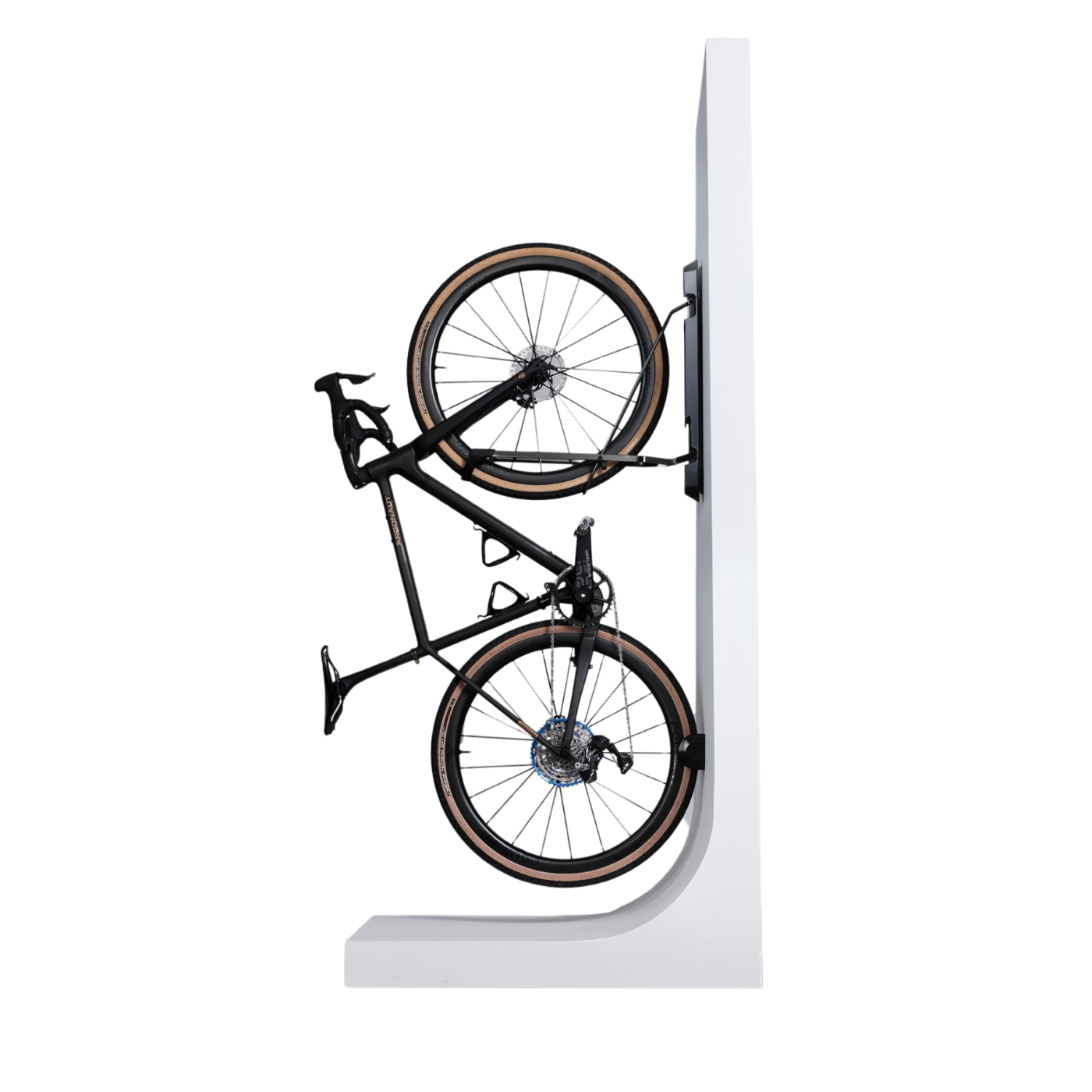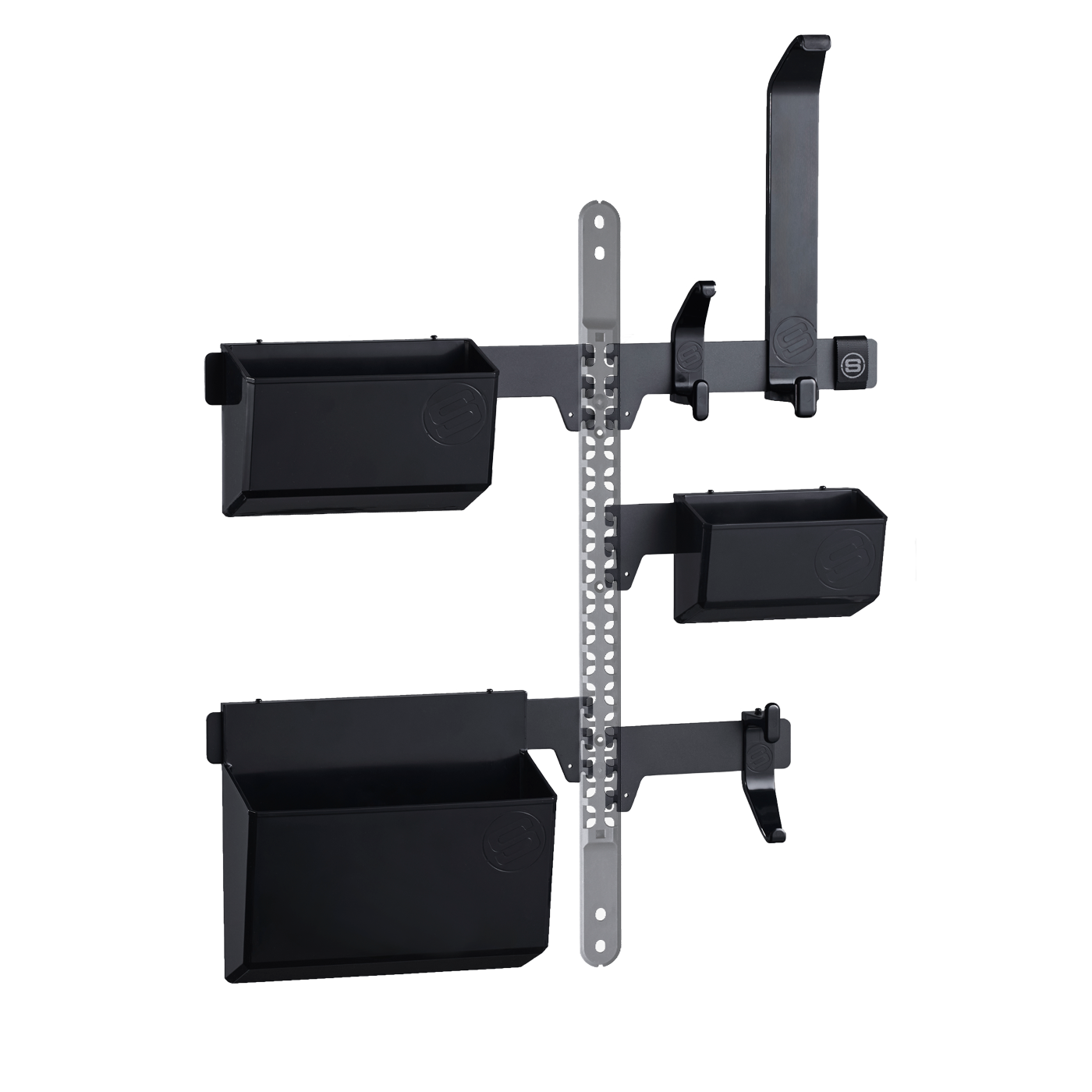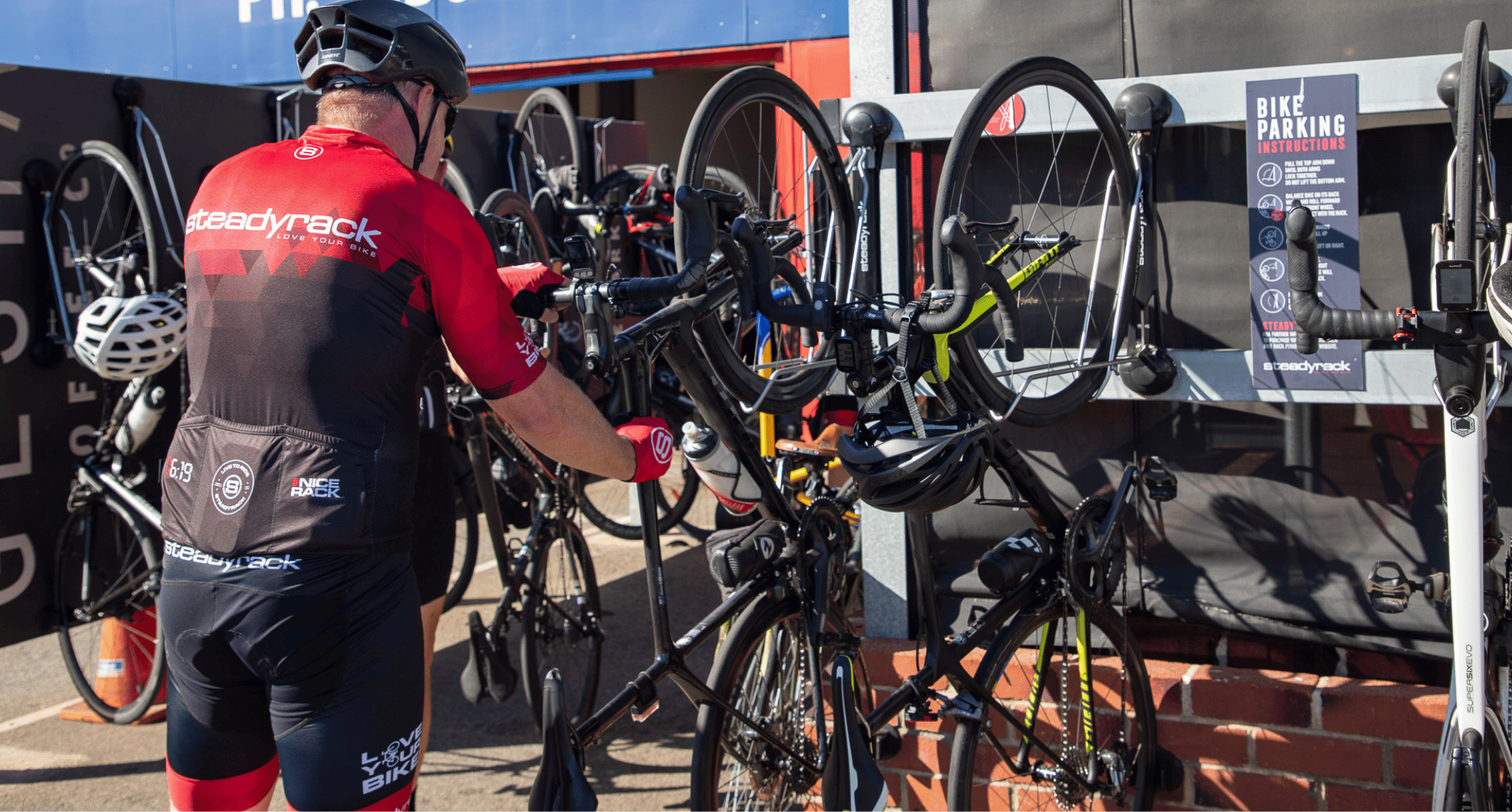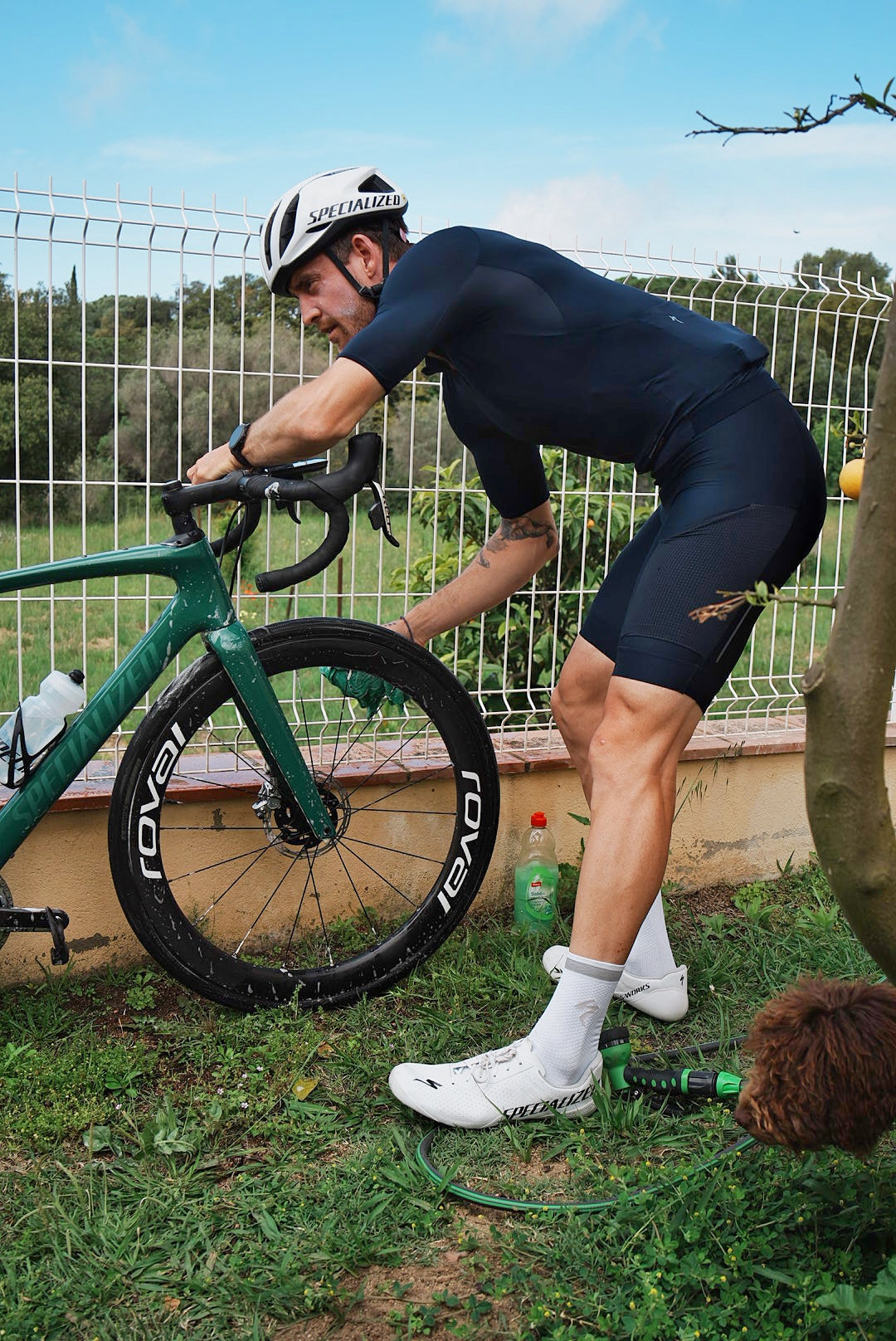Clipless Pedals vs Flat Pedals: Find Your Perfect Fit
The debate between flat or clipless pedals is a circling topic in the cycling community and we wanted to find out just which type of pedal works best for each cycling niche. Both have their disadvantages and advantages, and the right choice will depend on your riding style and preferences! In this blog, we are going to take a deeper look at clipless and flat pedals and perhaps, we will be able to help you make your choice!

Clipless Pedals
Clipless pedals require special shoes with cleats on the bottom, that click into place with the pedal that has a built-in component to keep the foot connected with the pedal.
Road Cycling
Pros
Increased Efficiency & Energy Saving:
Consistency and speed are easier to achieve with clipless pedals as your foot stays connected with the pedal allowing one foot to push down while the other pulls up. This also means that you can save your energy and reduce fatigue!
Better Control:
When cycling at high speeds or competing in sprints, being clipped in guarantees that your feet stay in the perfect position for the duration of the ride.
Aerodynamics:
Clipless pedals are on most occasions more aerodynamic, which is beneficial for competitive road cyclists.
Cons
Learning Curve:
Using clipless pedals can be tricky to learn for beginner riders. It may be more difficult to clip in and out, for example at sets of traffic lights or stop signs.
Cost:
Using clipless pedals means you also need to have the appropriate shoes to be able to clip in. These come at an additional cost, which some cyclists may prefer to avoid.
Mountain Biking
Pros
Better Control:
Having clipless pedals means you can tackle rougher terrain, rocks and other obstacles with more precision. Because your feet are locked in, you can have the peace of mind that you won’t lose control of your bicycle when you face the more challenging cycling trails. It also provides extra security when facing jumps or big drops.
Power Efficiency:
During climbs and long rides, it is essential that pedalling is kept efficient and using clipless pedals allows you to improve your power efficiency.
Cons
Falls Risks:
If an MTB rider is required to unclip suddenly, this can potentially cause a fall, which is a common concern for beginner riders. It is also a risk if you unclip unexpectedly and are not properly prepared with the right technique to master a jump or drop.
Minimal Foot Platform:
Using clipless pedals means less of your foot is on the pedal, which can minimise your power in explosive moves as well as provide slightly less balance and precision.
Gravel Cycling
Pros
Security & Control:
Having better foot security ensures you maintain optimal control on tricky terrain.
Power Efficiency:
Long distance gravel rides benefit from enhanced power transfer, which clipless pedals allow for.
Cons
Mud Clearance:
Some clipless pedals can struggle with the clogging of mud which can make clipping in and out challenging.
Learning Curve:
Like road cycling, clipping in and out can be tricky for beginner cyclists, and in the case of gravel riding, mixed terrain can make it more difficult.

Commuting
Pros
Fitness:
Using clipless pedals allows you to have a more consistent pedalling technique, contributing to overall fitness.
Cons
Learning Curve:
Having to clip in and out at traffic lights or in heavy traffic could be dangerous and inconvenient for a commuter, particularly beginner riders.
Inconvenience:
Most commuters are going to and from school or educational institutions and therefore walking in clipless shoes can be uncomfortable. It also means you are required to bring a second pair of shoes to change into after your commute.

Flat Pedals
Flat pedals have a broad, flat platform that come with pins that can grip to a wider variety of shoes and do not require a specific shoe, like clipless pedals do.
Road Cycling
Pros
Easy Use:
Flat pedals are much easier to use for beginner cyclists who are still adjusting to road cycling.
Convenience:
Casual riders have the convenience of wearing any type of shoe with flat pedals.
Cons
Reduced Power Transfer:
As you don’t have the push pull system, using flat pedals tends to limit your power transfer.
Unstable Surface:
There is a higher risk of your feet slipping off the pedals, especially at high speeds or in mixed weather conditions.
Mountain Biking
Pros
Flexibility:
Using flat pedals makes it easier to adjust foot position in tougher terrains or to bail yourself out of a section of your ride.
Beginner-Friendly:
As a beginner mountain bike rider, using flat pedals means you have the chance to learn and navigate new trails before being locked in with clipless.
Cons
Reduced Control & Security:
On rough terrain, it may feel a little less secure using flat pedals and increases the risk of your feet slipping.

Gravel Cycling
Pros
Versatility:
When in technical gravel trails, flat pedals allow you for quick and easy adjustments and dismounts if required.
Comfort:
The convenience allows you to wear whichever shoe you feel most comfortable in, which is beneficial for long distance rides.
Cons
Reduced Power Transfer:
Like road cycling, flat pedals don’t provide the same amount of power transfer as clipless pedals do.
Less Control:
You may feel less secure on rocky, rough terrain without having your foot clipped into place.
Commuting
Pros
Convenience:
Flat pedals allow you to stop and start at traffic lights and stop signs easily, which is a common occurrence when commuting.
Versatility:
You can wear any type of shoe so there is no need to pack extra shoes for once your commute is finished.
Cons
Lower Efficiency:
Pedalling speeds can be reduced with flat pedals which may result in a slower commute.
Foot Slippage:
If commuting in wet weather conditions, the risk of foot slippage increases as there is no locked in security on a flat pedal.

Our Brand Ambassador, ultra-cyclist Jack Thompson, swears by the Shimano SPD-SL Dura Ace Road Pedals. Jack shared with us that most of his riding is on the road and Shimano cleats are stocked at most bike shops, making these pedals convenient when travelling. The cleats that he uses are the yellow option, as they offer the most float. "The cleats last a long time which is an added bonus!". The most important factor when choosing pedals for Jack is reliability, and the trusty Shimano pedals have never let him down.
In conjunction with his Shimano pedals, Jacks use the 4mm longer Shimano spindles which helps widen his stance and provides more comfort. When riding, Jack will have the float on his pedals set quite loose, which allows him to have a little bit more movement, accommodating for any tight muscles he may experience and reducing the restricted movement of his ankles.
Making your choice between flat pedals and clipless pedals ultimately comes down to your own personal preference and of course, your cycling niche and experience. For long distance, consistent cycling like road or gravel cycling, clip pedals may be the best option. For mountain bike riding and commuting, the flexibility and convenience of flat pedals may outweigh the pros of the clipless pedals. Choosing the most suitable pedals for your cycling adventures can enhance your experience and assist with improving your overall performance.
Want to shop the perfect storage solution to help organise your bike collection? Shop our range here!








